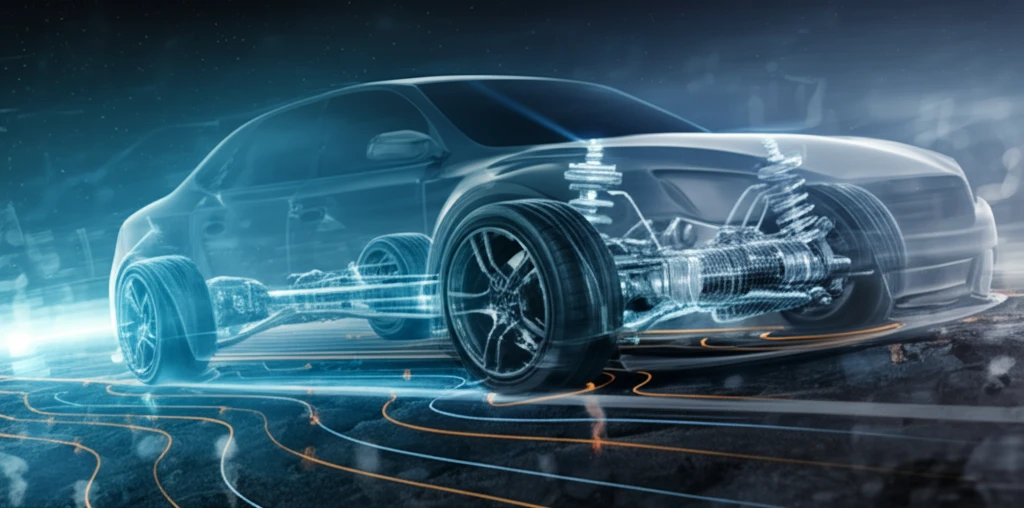
Smoother Rides Ahead: Optimizing Car Suspensions with Cutting-Edge Tech
"Explore how Kriging models and flexible multi-body dynamics are revolutionizing car suspension design for a more comfortable driving experience."
For decades, automotive engineers have strived to perfect the delicate balance between handling and comfort. At the heart of this challenge lies the suspension system, a critical component that absorbs road imperfections and keeps the ride smooth. Among the various suspension designs, the MacPherson strut is a popular choice, particularly in front suspensions, due to its simplicity and cost-effectiveness.
However, the MacPherson strut suspension isn't without its challenges. One significant issue is the generation of 'side load' within the damper. This occurs when the wheel moves vertically, causing friction and reducing the damper's ability to respond effectively to bumps and vibrations. Ultimately, this translates to a less comfortable ride for the driver and passengers.
But what if we could minimize this side load? Recent research explores innovative approaches using advanced modeling techniques to optimize the MacPherson strut suspension. By employing Kriging models and flexible multi-body dynamics (FMBD), engineers are finding ways to fine-tune suspension design for a smoother, more enjoyable driving experience.
Understanding Side Load and Why It Matters

Side load, in the context of a MacPherson strut suspension, refers to the force generated perpendicular to the damper's primary axis. This force arises from the geometric constraints of the suspension design, particularly when the wheel encounters vertical movement. Unlike systems with upper and lower control arms, the MacPherson strut utilizes the damper and spring as upper members.
- Reduced Damper Efficiency: Side load increases friction between the piston and cylinder, hindering the damper's ability to respond quickly and effectively to road imperfections.
- Compromised Ride Comfort: Increased friction transmits vibrations and shocks to the vehicle's body, resulting in a harsher, less comfortable ride.
- Premature Wear: Constant side loading can accelerate wear and tear on the damper components, shortening their lifespan and potentially leading to costly repairs.
The Road Ahead: Smarter Suspensions for a Better Drive
The application of Kriging models and FMBD analysis represents a significant step forward in suspension design. By understanding and minimizing side load, engineers can create MacPherson strut suspensions that offer a smoother, more comfortable ride without sacrificing performance. These advancements promise a future where vehicles can effortlessly glide over imperfections, providing drivers and passengers with an unparalleled driving experience.
